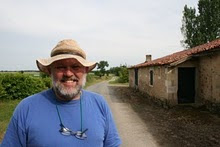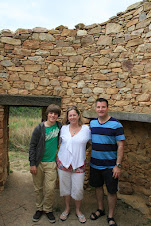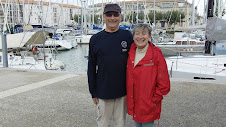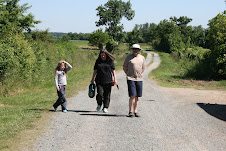A murmuration ~ Quel monde formidable!
What we were witnessing and marveling at was “the
spectacular display of European starlings (Sturnus vulgaris), the noun for
which is a murmuration," scientists Andrew King and David Sumpter said in
a 2012 Current Biology report. Their
report continued:
“The
mesmerizing act is typically seen at dusk throughout Europe, between November
and February. Each evening, shortly before sunset, starlings can be seen
performing breathtaking aerial manœuvres, before choosing a place to roost for
the night. These range in number from a few hundred to tens of thousands of
birds. Murmurations exhibit strong spatial coherence and show extremely
synchronized manœuvres, which seem to occur spontaneously, or in response to an
approaching threat.
According
to Wired magazine, which cited a 2008 report about this animal behavior:
"Each starling in a flock is connected to every other. When a flock turns
in unison, it’s a phase transition. At the individual level, the rules guiding
this are relatively simple. When a neighbour moves, so do you.”
I’m
sure that for many of you the word murmuration will be a new word, it certainly
is for me, and we found ourselves wondering, as we continued to marvel at the
dexterity of this huge flock, as it performed initially in front of the car and
subsequently all around us, what’s the trigger for such movements, as every so
often the whole flock would land briefly on one of the nearby fields, before
quite suddenly and unannounced swirling back into the air like a moving
“painting on the sky”, as one appreciative netizen described the amazing bird
ballet. (I guess murmuration was new to
many of you, but what about “netizen,” the google spellchecker certainly
doesn’t recognise it. I can only assume
that it is a play on the label internet citizen!)
Hence,
reference to various pieces of research done into this phenomena and quoted
above. This research is largely
inconclusive, and to date no-one has come up with a definitive answer for the
behaviour. However, imagine my surprise
when just a week or two later, I was reading an article out of Country Walking
magazine, about Icons of England. The
particular part of the larger article was written about George Alagiah, I’m
sure known to most of you as a journalist and television news presenter and
entitled “A Place in the Country”. Now,
some time later I’m at a loss as to what his Icon of England was as the article
has long gone up in smoke, helping to light the woodburner and maybe I’m
thinking HE WAS THE ICON! But in the
article he talks about a theory for the art of murmuration. He says that why
the starlings “twist and turn in unison, is because the ones on the outside are
constantly trying to get to the inside where they feel safer.” Now in the absence of anything else more
convincing, that explanation will do for me!!

































































No comments:
Post a Comment